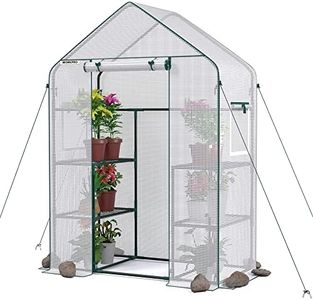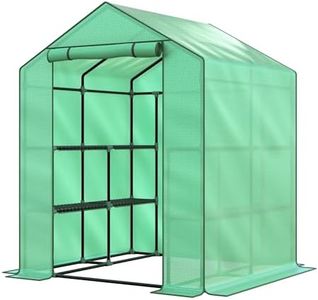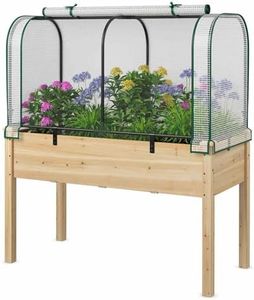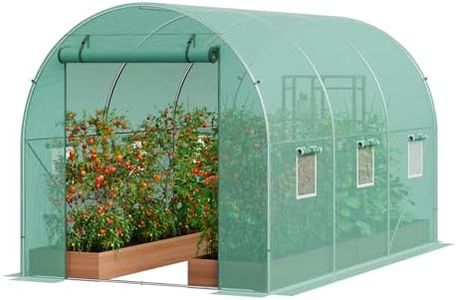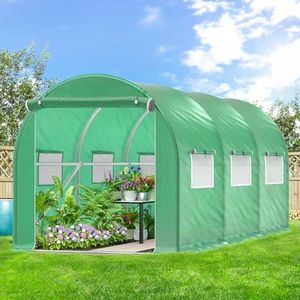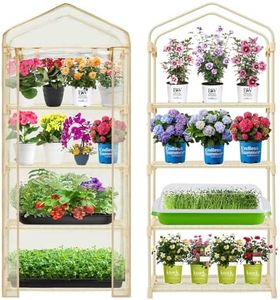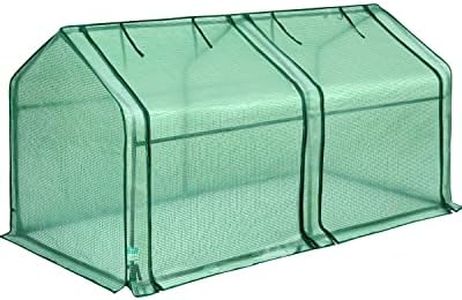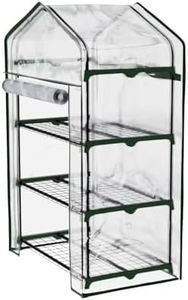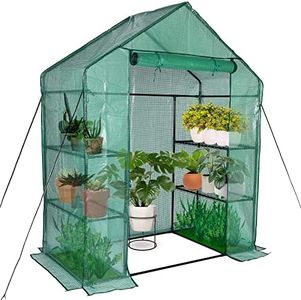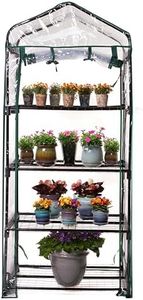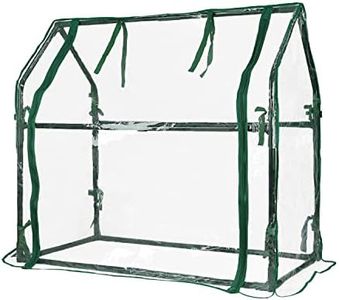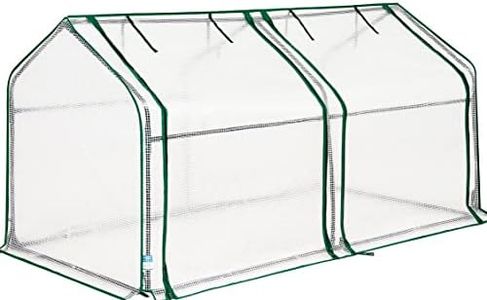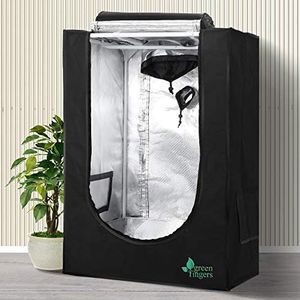We Use CookiesWe use cookies to enhance the security, performance,
functionality and for analytical and promotional activities. By continuing to browse this site you
are agreeing to our privacy policy
10 Best Greenhouse Kits
From leading brands and best sellers available on the web.Buying Guide for the Best Greenhouse Kits
Choosing the right greenhouse kit is all about matching your gardening goals and available space with the features each kit offers. Think about what you want to grow, how much space you have, and how hands-on you want to be with setup and upkeep. A good greenhouse kit should provide the right environment for your plants to thrive while fitting comfortably within your yard or outdoor area. Paying attention to the key specifications will help ensure that your greenhouse is both useful and manageable for you.SizeSize refers to the overall dimensions of the greenhouse, which can range from compact models suitable for tight spaces to large ones that can accommodate a variety of plants or even small trees. The size is important because it determines how many plants you can grow and how comfortable it is to move inside. When looking at size, think about your available space and what you plan to grow. Smaller greenhouses (typically under 6x6 feet) are ideal for beginners, patios, or growing herbs and small veggies, while medium (around 6x8 to 8x10 feet) suit more ambitious gardeners. Large models are best for those who want to grow a wider range of plants or need extra height for tall crops. Pick a size that leaves you room to walk and work inside, but fits well in your available area.
Frame MaterialFrame material is what the greenhouse's structure is made from, commonly aluminum, galvanized steel, or wood. This is important because it affects the durability, maintenance, weight, and look of your greenhouse. Aluminum frames are lightweight, rust-resistant, and low-maintenance, making them good for most people. Steel frames are stronger and can handle heavier snow or wind but may eventually rust unless they are coated. Wooden frames can look attractive and provide good insulation, but they require regular maintenance to prevent rot or insect damage. Choose a frame material that fits your location's weather conditions and how much maintenance you're willing to do.
Panel MaterialPanel material is the type of covering used for the greenhouse, such as polycarbonate panels, glass, or polyethylene film. This spec affects how much light gets in and how insulating the greenhouse is. Glass panels are clear and classic, letting in a lot of sunlight but can be heavy and fragile. Polycarbonate panels come in single or double layers and are lighter, shatter-resistant, and offer better insulation to keep temperatures stable. Polyethylene film is lightweight and inexpensive but less durable. If you live in a colder area or want year-round growing, go for double-layer polycarbonate for more warmth. For mild climates or temporary use, glass or polyethylene can work well. Match the panel type to your weather and what you want to grow.
VentilationVentilation involves how well air can circulate inside the greenhouse, which is crucial for controlling heat, humidity, and preventing plant diseases. Greenhouses typically use roof vents, side vents, or windows for airflow. More vents or automatic ones make it easier to maintain the right conditions, especially in hotter weather. If you live somewhere hot, look for kits with several large vents or openings, and consider automated options if you don’t want to open and close them manually. For cooler or milder climates, basic adjustable vents should be enough.
Ease of AssemblyEase of assembly tells you how simple or complex it is to put the greenhouse together. Some kits come with detailed instructions and snap-together parts, while others may require tools and a friend to help. If you’re not experienced with DIY projects, look for kits marketed as easy to assemble or check if they offer customer support. If you don’t mind a challenge, you can consider more complex but sturdier kits. Think about your skill level and how comfortable you are with tools when picking a greenhouse.
Accessories and ExpandabilityAccessories and expandability cover what extras or add-ons you can use with your greenhouse, like shelving, automatic waterers, or additional sections for future growth. This is important if you want to grow your setup over time or make your gardening more convenient. Some kits let you add more space, while others come with handy features like built-in gutters, shade cloths, or shelving. If you want to customize or expand your greenhouse later, choose a kit with good accessory options or modular design.
